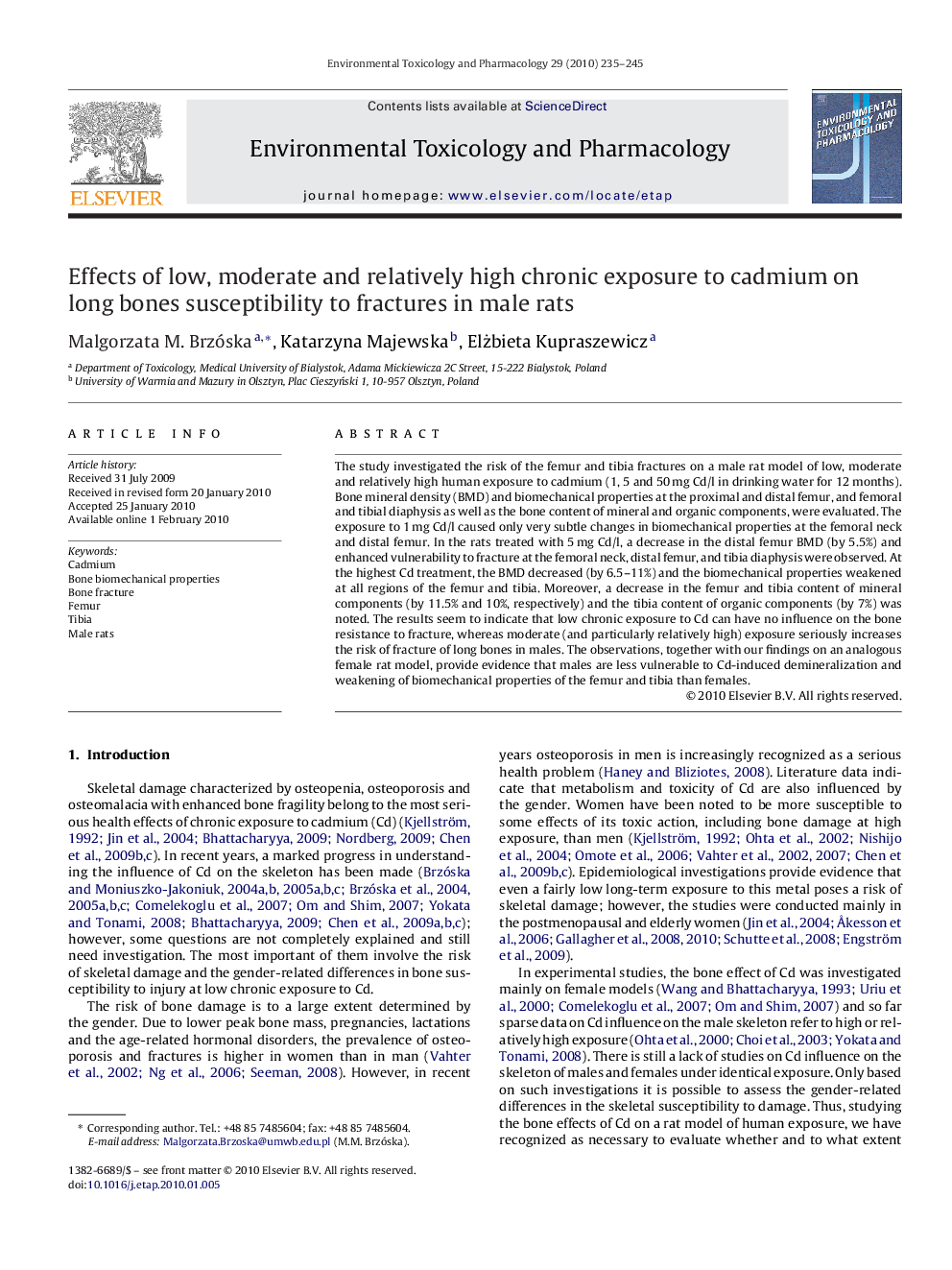| Article ID | Journal | Published Year | Pages | File Type |
|---|---|---|---|---|
| 2583537 | Environmental Toxicology and Pharmacology | 2010 | 11 Pages |
The study investigated the risk of the femur and tibia fractures on a male rat model of low, moderate and relatively high human exposure to cadmium (1, 5 and 50 mg Cd/l in drinking water for 12 months). Bone mineral density (BMD) and biomechanical properties at the proximal and distal femur, and femoral and tibial diaphysis as well as the bone content of mineral and organic components, were evaluated. The exposure to 1 mg Cd/l caused only very subtle changes in biomechanical properties at the femoral neck and distal femur. In the rats treated with 5 mg Cd/l, a decrease in the distal femur BMD (by 5.5%) and enhanced vulnerability to fracture at the femoral neck, distal femur, and tibia diaphysis were observed. At the highest Cd treatment, the BMD decreased (by 6.5–11%) and the biomechanical properties weakened at all regions of the femur and tibia. Moreover, a decrease in the femur and tibia content of mineral components (by 11.5% and 10%, respectively) and the tibia content of organic components (by 7%) was noted. The results seem to indicate that low chronic exposure to Cd can have no influence on the bone resistance to fracture, whereas moderate (and particularly relatively high) exposure seriously increases the risk of fracture of long bones in males. The observations, together with our findings on an analogous female rat model, provide evidence that males are less vulnerable to Cd-induced demineralization and weakening of biomechanical properties of the femur and tibia than females.
